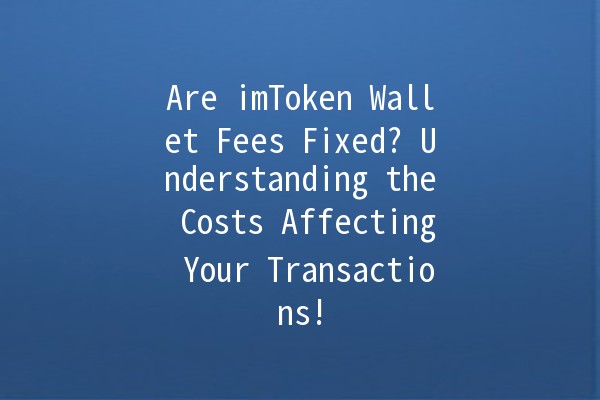When it comes to cryptocurrency wallets, understanding the fee structure is crucial for users. Particularly, imToken, a popular digital asset wallet, raises questions about whether its transaction fees are fixed. This article delves into the complexities surrounding imToken wallet fees, providing insights into the fee mechanics, potential variability, and practical tips for managing these costs effectively.
ImToken wallet fees are the charges incurred when users perform transactions on the blockchain using the wallet. These fees generally cover the costs associated with processing transactions and are part of the blockchain's operational expenses.

The question arises: are imToken wallet fees fixed or do they vary? The answer is nuanced, as it involves several factors:
For users, understanding the fluid nature of transaction fees is essential. Improper management of these fees can lead to unexpected costs, which may hinder the effectiveness of trades or transactions.
Here are five actionable tips to help you navigate imToken wallet fees effectively:
Example: If network congestion is high and fees spike, waiting for a period of reduced activity can save users a considerable amount on transaction costs.
Example: If a transaction isn’t urgent, a user might opt for a lower fee, thus saving on costs while still ensuring the transaction is processed eventually.
Example: Instead of sending several small amounts separately, a user can combine them into one transaction.
Example: If the wallet suggests that the fee is unusually high, it may be worth waiting or adjusting the transaction parameters.
Example: Following imToken’s announcements or blog updates could reveal new feesaving features.
The primary factors influencing transaction fees on imToken include network demand, transaction size, and userdefined fee settings. Fees can increase during high traffic periods or when processing complex transactions.
Yes, fees can vary depending on the cryptocurrency due to differences in blockchain technology and congestion levels. For instance, Bitcoin and Ethereum may have different fee structures.
Absolutely! Users can select their preferred transaction fees. This feature allows for flexibility depending on how quickly they want the transaction to be processed.
While imToken aims for transparency, there may be additional fees associated with specific services like swaps or fiat transactions. Always review the particulars before executing any transaction.
ImToken employs a dynamic fee assessment methodology to reflect realtime market conditions, ensuring users are not overcharged during lowdemand periods.
While predictions are challenging due to market volatility, users can analyze historical transaction fees and current network congestion to make informed guesses about future fees.
Understanding imToken wallet fees is essential for any user aiming to maximize their cryptocurrency experiences. By recognizing that fees can vary due to several factors, users can take proactive steps to make informed transactions, ultimately saving costs in managing their digital assets. Whether through strategic timing, using custom settings, or staying informed on network conditions, there are plentiful avenues available to manage and mitigate the fees associated with using the imToken wallet effectively.